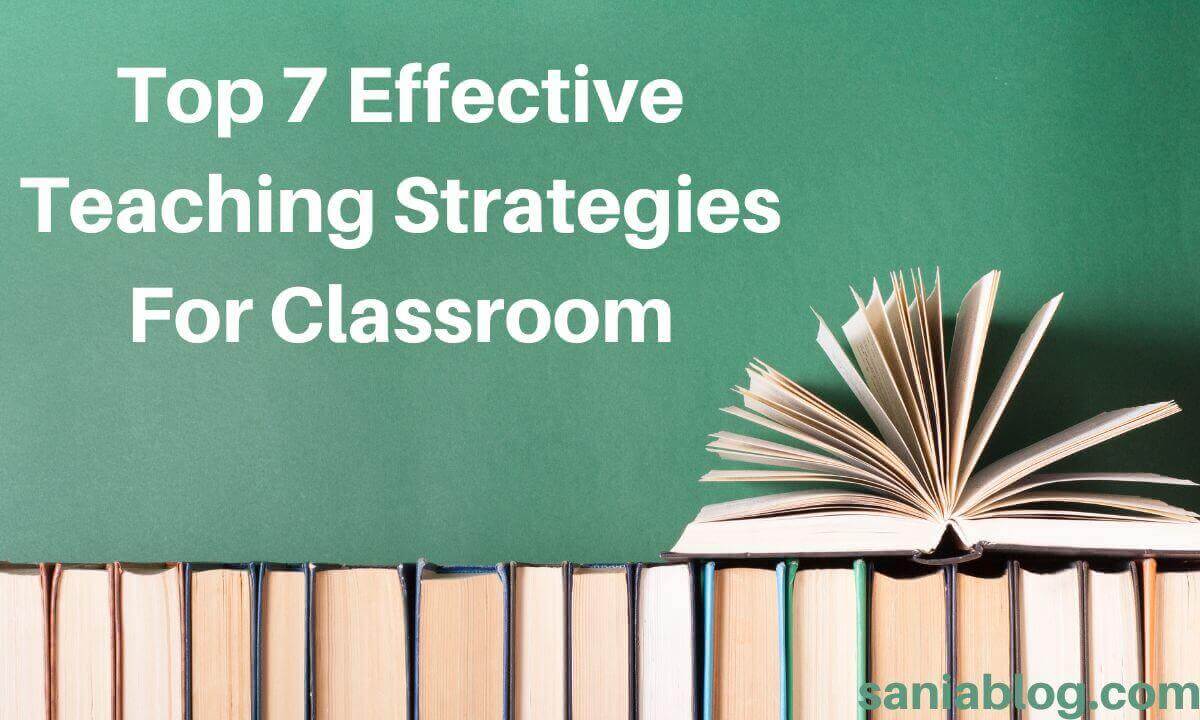Top 7 Effective Teaching Strategies For the Classroom
The classroom is a dynamic environment that brings together students from diverse backgrounds, abilities, and personalities. Therefore, being an effective teacher requires the application of creative teaching strategies to meet the individual needs of students.
Whether you have been teaching for two months or twenty years, it can be difficult to know which teaching strategy will work best for your students. As a teacher, there is no one-size-fits-all, so here are several effective teaching strategies you can use to inspire your teaching practice.
1. Visualization
Bring boring academic concepts to life with visual and hands-on learning experiences, and help your students understand how their learning applies to the real world.
Examples include using interactive whiteboards to display photos, audio clips, and videos, and encouraging your students to get up from their seats with class experiments and field trips.
2. Cooperative Learning
Encourage students with mixed abilities to work together by encouraging small group or whole class activities.
By expressing their ideas and responding to others, your students will develop their confidence and improve their communication and critical thinking skills, which are essential throughout life.
Solving math puzzles, conducting science experiments, and acting out short plays are just a few examples of how collaborative learning can incorporate into the classroom.
3. Instructions on request
Ask thought-provoking questions that encourage your students to think for themselves and learn more independently.
Encouraging students to ask questions and explore their own ideas helps improve their problem-solving skills and deepen their understanding of academic concepts. Both are important life skills.
Questions can be scientific, such as “Why did my shadow change size?” or “Is the sum of two odd numbers always an even number?”. However, they can also be subjective, encouraging students to express their unique views, e.g. “Should poetry rhyme?” or “Should all students wear uniforms?”.
4. Differentiation
Differentiate your lessons by assigning assignments based on students’ abilities to make sure they left behind no one.
Tailoring classroom activities to students’ individual learning needs means that those with higher academic abilities are challenged and those who struggle are provided with appropriate support.
This could involve distributing worksheets of varying complexity to different groups of students, or creating a series of classroom workspaces with various assignments for students to choose from.
In addition, learning tools like equalize can save you time by automatically grouping students for you, making it easier to identify individual and class learning gaps.
5. Technology in the classroom
Integrating technology into your classroom is a great way to actively engage your students, especially as digital media surrounds youth in the 21st century.
An interactive whiteboard or mobile device can be used to display images and videos to help students visualize new academic concepts. Learning can become more interactive through the use of technology, as students can be physically involved during class and immediately explore their ideas, which develops autonomy.
Mobile devices such as iPads and/or tablets can be used in the classroom to allow students to record results, take pictures/videos, or simply as a behavior management technique. Also, incorporating an educational program like equalize into your lesson plans is a great way to make formative assessments fun and engaging.
6. Behavior Management
Implementing effective behavior management strategies is critical to earning the respect of your students and ensuring students have equal opportunities to reach their full potential.
Noisy and distracting classrooms do not foster a productive learning environment, so developing an atmosphere of mutual respect through a combination of discipline and respect can be beneficial for you and your students.
Examples include a fun and interactive reward chart for younger students, where participants move up or down based on their behavior, with the best student receiving a prize at the end of the week. Golden Time can also work for students of all ages, with a choice of different activities such as games or no homework as a reward for their hard work.
7. Professional Development
Participating in a regular continuing education program is a great way to improve teaching and learning in your classroom.
With education policies constantly changing, attending events where you can draw inspiration from other teachers and academics is helpful. It’s also a great excuse to step out of the classroom and collaborate with other teachers like you!
Sessions can include training on new educational technologies, online safety training, tips on using teaching assistants, and more.
Being an effective teacher is a challenge because each student is unique, but by using a combination of teaching strategies, you can address a variety of student learning styles and academic abilities and make your classroom a dynamic and motivating environment for students.
What strategies did you use to become a successful teacher? Do you have any top tips? Comment below – we’d love to hear from you.
